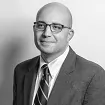For the second time this year, the TCPA came before the Supreme Court via teleconference oral argument in Facebook, Inc. v. Duguid, et al, Case No. 19-511 (2020). The Supreme Court's disposition of Facebook's petition is expected to resolve a widening Circuit split over what qualifies as an automatic telephone dialing system ("ATDS") under the TCPA, 47 U.S.C. § 227, et seq., and thus determine much of the scope of the TCPA's calling restrictions.
Question Presented
The Supreme Court granted review of the question: "Whether the definition of ATDS in the TCPA encompasses any device that can "store" and "automatically dial" telephone numbers, even if the device does not "us[e] a random or sequential generator"?"
Six Circuits have previously answered the question. The Second, Sixth and Ninth held that a predictive dialer or system that dials from a stored list can qualify as an ATDS under the TCPA. The Third, Seventh, and Eleventh require that technology must have the capacity to generate random or sequential telephone numbers to qualify as an ATDS. The Seventh Circuit decision, Gadelhak v. AT&T Services, Inc., was penned by then-Judge Barrett, who participated in today's argument. In addition, the D.C. Circuit's 2018 remand in ACA International v. FCC questioned whether a broad reading of ATDS was lawful.
This case arises out of the Ninth Circuit's broad approach to the definition of an automatic telephone dialing system under the TCPA.
Procedural History
The controversy comes before the Supreme Court on the basis of text messages that plaintiff Duguid allegedly received from Facebook in 2005. Duguid alleged that Facebook had violated the TCPA by maintaining a database of numbers on its computer and transmitting text message alerts to selected numbers from its database using an automated protocol. Facebook filed a motion to dismiss, arguing that Duguid had failed to plead the use of an ATDS. The district court held that the ATDS allegations were insufficient because they "strongly suggested direct targeting rather than random or sequential dialing" and dismissed the case. Soon after, the Ninth Circuit issued its decision in Marks v. Crunch San Diego, holding that an ATDS definition includes devices with the capacity to store numbers and to dial numbers automatically. Duguid appealed the prior dismissal of his claims and, applying Marks, the Ninth Circuit reversed. Facebook asked the Supreme Court to review the Ninth Circuit's decision.
Briefing
Duguid, Facebook, and the United States have fully briefed the issue. Duguid argues for a broad definition of ATDS based on the statutory text and two canons of construction, the distributive-phrasing canon and last-antecedent canon, that he alleges show the adverbial phrase "using a random or sequential number generator" modifies the verb "to produce" but not the verb "to store." Facebook, on the other hand, posits that the statutory language "using a random or sequential number generator" is an adverbial phrase that modifies both the verbs "store" and "produce." Under that approach, the statutory text limits the definition of an ATDS to technology that uses a random- or sequential-number-generator. The United States filed a brief agreeing with Facebook that the plain text of the TCPA limits the definition of an ATDS to random- or sequential-number-generators. The government's grammatical analysis focuses on the comma that precedes the adverbial phrase, pointing to past Supreme Court decisions and canons of statutory interpretation that advise such a comma is evidence that the phrase is meant to modify all antecedents (in this case, both the verbs "store" and "produce").
Oral Argument
Argument in the case went over the scheduled hour by about 20 minutes. Facebook and the United States split the first 30 minutes and Duguid took the remaining time, excluding Facebook's brief rebuttal. While oral argument does not always foretell the Court's decision, certain trends developed.
- Grammatical
Construction: A majority of Justices seemed to agree that
Facebook and the United States had a stronger grammatical reading
of the statute, but struggled with both the awkwardness of the
construction, and the surplusage problem that their interpretation
creates.
- Justice Alito, for example, asked both Facebook and the United States whether it made sense to talk about random or sequential number generators as a device that can "store" numbers, wondering if their interpretation rendered the verb "store" superfluous. In response, the United States suggested that
- Congress was likely taking a
"belt-and-suspenders" approach to drafting.
The Chief Justice, noting that most speakers do not resort to statutory canons of interpretation to understand language, suggested that the "sense" of the provision was more important than its syntax. - Justice Kavanaugh repeatedly asked about the different scope of the prohibition on artificial or prerecorded voice calls and "live" calls using an ATDS, as a way to understand the ATDS language.
- Justice Gorsuch asked Facebook and the United States to address an alternate interpretation, offered by then-Judge Barrett in her decision in Gadelhak, that the clause "using a random or sequential number generator" could modify the phrase "telephone numbers to be called" instead of the verbs "store" and/or "produce." Both parties asserted this interpretation would lead to their preferred outcome.
- Broader Questions on TCPA
Scope: The Justices also pressed the parties on questions
unrelated to the grammatical construction the statute.
- Justice Thomas asked why "text messages" were covered by the TCPA at all, given that the statute's language only regulates calls and later called the statute an "ill fit" for current technology. Justice Thomas's question is indicative of a broader concern, shared expressly by Justices Sotomayor, Alito and Kavanaugh, that the TCPA may be ill-suited to regulate technology that looks very different from the technology available in 1991 when the TCPA was passed.
- Justices Sotomayor, Barrett, Breyer, and Gorsuch each questioned whether the Ninth Circuit's broad definition of an ATDS would expose all smartphone users to potential liability.
- Justice Barrett was concerned specifically with the call-forwarding function and seemingly "automated" functions that modern cellphones are equipped with.
- Duguid seemed unable to provide the Justices with a satisfactory answer on several of the non-grammatical issues and gave conflicting answers concerning the role for, and level of, human interaction necessary to remove technology from the definition of an ATDS.
In sharp contrast to the Supreme Court's oral argument in Barr v. American Association of Political Consultants, none of the Justices mentioned the TCPA's popularity among the American public in interpreting the statutory language. Justice Alito went so far as to suggest that the TCPA may in fact be obsolete, and although the Court has not claimed the power to declare a statute null on that basis, the TCPA might be a good candidate.
The content of this article is intended to provide a general guide to the subject matter. Specialist advice should be sought about your specific circumstances.








